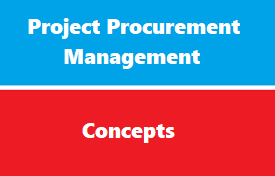introduction
Project Procurement Management includes the processes necessary to purchase or acquire products, services, or results needed from outside the project team. The organization can be either the buyer or seller of the products, services, or results of a project.
Project Procurement Management includes the contract management and change control processes required to develop and administer contracts or purchase orders issued by authorized project team members.
Project Procurement Management also includes controlling any contract issued by an outside organization (the buyer) that is acquiring deliverables from the project from the performing organization (the seller), and administering contractual obligations placed …
Concepts
Procurement management involves planning, soliciting sources, choosing a source, administering the contract, and closing out the contract. Procurement management,
as far as your PMP exam is considered, focuses on the practices from the buyer’s point of view, not the seller’s. The seller can be seen as a contractor, subcontractor, vendor, or supplier.
When buying anything from a vendor, the buyer needs a contract. A contract becomes a key input to many of the processes within the project. The contract, above anything else, specifies the rules and agreements for the project.
Here’s a neat twist: when the seller is completing its obligations to supply a product, PMI treats those obligations as a project. In other words,
In the scenarios described in this chapter, the seller will be outside of the performing organization. The buyer will be managing a project and procuring resources from a vendor. However, all of the details in this chapter can be applied to internal work orders, formal agreements, and contracts between organizational units within a single entity.
Outsourcing Benefits
Outsourcing Benefits
- To reduce both fixed and recurrent costs
- To allow the client organization to focus on its core business
- To access skills and technologies
- To provide flexibility
- To increase accountability
Procurements Management Processes
12.1 Plan Procurements The process of documenting project purchasing decisions, specifying the approach, and identifying potential sellers.
12.2 Conduct Procurements The process of obtaining seller responses, selecting a seller, and awarding a contract.
12.3 Control Procurements The process of managing procurement relationships, monitoring contract performance, and making changes and corrections as needed.
Conclusion
this was briefly an overview about knowledge area ( Procurement Management )
next articles we will discus each process in
Procurement management in Fully Details



